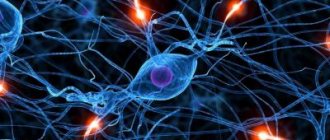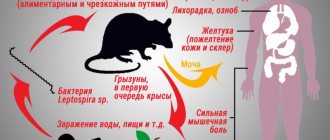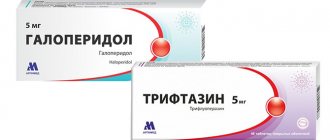Fibromyalgia is a real “phantom” among known diseases. It appears suddenly, causing a person to suffer excruciating pain throughout the body. Modern medicine still does not know what causes the disease, and can only offer symptomatic therapy as a treatment. The disease is “young”, and much attention was paid to it only in the second half of the 20th century. Previously, the disease was considered hysteria, suspiciousness or a symptom of mental disorders. And only at the beginning of this century the pathology acquired its clinical signs and was included in the International Classification of Diseases.
What is fibromyalgia?
Fibromyalgia (literally translated as “pain in the muscle fibers”) is a neurological disorder characterized by chronic muscle pain. It is impossible to diagnose this disease, because the disease is not accompanied by any pathological changes in the body.
Therefore, the diagnosis of fibromyalgia is made when all possible variants of diseases are excluded: rheumatism, mental disorders, etc.
Middle-aged and older women are susceptible to the disease (about 95% of diagnosed cases). However, the disease also occurs in men. It is worth noting that a third of the incidence occurs in childhood. Moreover, the frequency of occurrence in this case does not depend on gender.
Why does the disease appear?
Today, the main cause of fibromyalgia is considered to be an increased number of sensitive nerve endings, the irritation of which leads to pain. At the same time, the excitability of the nerves increases, which leads to the appearance of pathological foci - generators of increased excitation. The latter constantly overirritate the nerves, forming the so-called. "vicious circle" of pain. Its essence is that the occurrence of pain intensifies the subsequent pain syndrome.
Despite the fact that most clinicians are inclined to the described theory, there are many possible causes (factors) of the disease:
- Heredity: for example, relatives of patients with fibromyalgia are 8 times more likely to develop the disease.
- Traumatization (bruises, burns, etc.), promoting constant irritation of nerve fibers and increasing their sensitivity (sensitization).
- Peripheral neuropathies (compression, inflammation or metabolic disorders of nerve fibers), which are combined with chronic hyperexcitation and subsequent sensitization of nerve endings (carpal syndrome, neuritis, etc.).
- Hormonal imbalance associated with a lack of growth hormones (somatotropin) or thyroid gland (hypothyroidism).
- Increased breakdown of serotonin, which is associated with depression and apathy in patients.
- Constant stress and emotional overstrain.
- Inadequate response of the body to infections (herpes, mononucleosis), vaccines, medications and mercury, which can lead to a specific immune response or neurometabolic changes.
What are the reasons?
What provokes the development of myofascial pain syndrome? Today, a number of reasons have been formed that in one way or another influence the appearance of the disease. The occurrence of fibromyalgia can be due to a number of reasons:
- frequent stress;
- overwork;
- accident, injury or serious incurable pathology;
- disruptions in the functioning of the hormonal system;
- the use of certain medications.
Many scientists and experts do not see this symptom complex as a disease and call it a chronic illness caused by stress. But everyone knows that stress is a kind of protective reaction of the body, in particular the central nervous system. In fact, this reaction is beneficial for the body, but only when it is short-term.
If stress is prolonged, this has the most negative effect on the functioning of the nervous, immune and endocrine systems. Prolonged stress provokes disruption of the adrenal and pituitary glands, as well as their improper production of hormones. Disorders and disturbances in the composition of hormones provoke the appearance of muscle pain.
data-ad-format="auto">
It has been proven that people experiencing the disease have insufficient concentrations of the neurotransmitter serotonin in their bodies. Frequent and prolonged stressful situations can provoke a decrease in the body's defenses. The body becomes vulnerable, it begins to be attacked by various pathogenic microorganisms that previously did not have such an opportunity. These bacteria include: chlamydia, herpes, toxoplasma, cytomegalovirus, streptococcus.
The active influence of microorganisms on the human body contributes to the release of a large number of antibodies into the bloodstream, which, in an attempt to fight bacteria and viruses, begin to attack their own tissues, in particular bone and muscle.
Women aged 25-40 are more susceptible to fibromyalgia. In men, this pathology practically does not occur, because they are less susceptible to stress compared to representatives of the weaker half of society.
In addition, the appearance of chronic illness can be caused by: injuries, genetic predisposition, increased psychological vulnerability.
Symptoms of the disease
The main manifestation of the disease is pain lasting more than three months. It is usually a widespread soreness that occurs in symmetrical areas of the body. Patients describe it as a burning or stabbing pain throughout the body. Such sensations may be accompanied by goosebumps or numbness of the skin. Sometimes the pain can be localized in the joint area.
Patients often complain of high muscle fatigue, as well as morning stiffness and a feeling of fatigue after sleep - the so-called. chronic fatigue syndrome. Exercise tolerance decreases, but the pain does not subside at rest.
The described symptoms are especially pronounced at characteristic points located symmetrically throughout the body:
- at the attachment points of the occipital muscles;
- the middle of the edge of the trapezius muscles;
- above the inner edge of the shoulder blades;
- in the upper outer quadrant of the buttocks;
- posterior part of the trochanteric eminences (back of the thighs);
- lower part of the sternocleidomastoid muscles;
- at the level of the cartilages of the second ribs;
- cubital fossa;
- internal fat pads of the knee.
Pain syndrome is often accompanied by disturbances in the deep phase of sleep. As a rule, patients have difficulty falling asleep, they often wake up, and after a night’s rest they do not feel invigorated - they “wake up tired.” At the same time, the situation is not affected in any way by the duration of sleep, on the contrary: the longer the sleep, the more pronounced the stiffness in the morning.
In half of the cases, the disease is combined with mental disorders: anxiety, apathy, and depression appear. Cognitive functions are often impaired: memory, concentration and attention, and “foggy” consciousness occurs, which makes it difficult to concentrate.
Symptoms include dependence on weather conditions, dizziness, dryness and “bitterness” in the mouth, as well as temperature changes. Patients complain of convulsions and statodynamic disorders (inability to assume postures or move).
Sometimes swelling and urination problems appear: frequent urge with some pain. Changes can affect not only the genitourinary system, but also the gastrointestinal tract. However, in this case it is necessary to exclude other pathologies.
One of the important symptoms is migraine-type headaches. However, in the latter case, the pain syndrome will be one-sided and pulsating in nature. Often the symptoms are combined with an aura that foreshadows an attack of pain (phobia of light and noise, speech impairment). A similar clinic for fibromyalgia will not be observed.
Pain of unknown origin or arthralgia of the knee joint
Arthralgia is severe pain in a specific joint.
As a rule, arthralgia is not an independent disease, but only a harbinger of a somatic disease or musculoskeletal system.
Arthralgia occurs when:
- infectious diseases;
- autoimmune and rheumatic joint diseases;
- injuries of the articular apparatus;
- arthrosis and arthritis;
- tumor processes;
- weather sensitivity;
- diseases of the endocrine system.
Diseases that can cause the syndrome
Diseases that are accompanied by arthralgia:
- Gonarthrosis or deforming osteoarthritis of the knee joint. This is a deforming disease of the knee joint, characterized by dystrophic changes in the articular cartilage and bone tissue, which over time leads to irreversible impairment of its function. It is one of the most common causes of knee pain and disability.
- Reactive arthritis or Reiter's disease is an acute reactive inflammation of the joints that develops after a common underlying disease of the body. Most often, the cause of reactive arthritis is an acute or chronic intestinal infection, a urogenital infection caused by chlamydia, or an upper respiratory tract infection of mycoplasma or chlamydia nature.
- Drug-induced arthralgia. The use of certain medicinal groups of drugs can cause arthralgia of the knee joint. This list includes antibiotics, barbiturates, tranquilizers, contraceptives, sleeping pills, and drugs used in the treatment of tuberculosis. After the end of use, arthralgia goes away on its own.
- Reactive arthralgia develops as a symptom against the background of a general disease, most often with a chronic, sluggish infection. Such diseases may be tuberculosis, syphilis, bacterial heart disease, systemic lupus erythematosus, systemic scleroderma, chronic pyelonephritis, adnexitis. With this type of arthralgia, no special treatment is prescribed, but treatment of the underlying disease is carried out.
- Gout. Gouty damage to the knee joint is rare, since this disease is more characterized by damage to the small joints of the lower extremities, although in severe cases large joints are also affected. Gout is a metabolic disease when uric acid is not completely eliminated from the body, and urate accumulates in the joint tissues and kidneys, with the development of nephropathy.
Clinical manifestations
Arthralgia of the knee joint is characterized by pain that intensifies with movement in the knee joint. The pain can have a so-called “starting character”, that is, it appears only at the beginning of the movement, and after some time passes.
When collecting complaints, the doctor clarifies the onset and duration of pain, as well as the reasons for the onset and relief of pain. All this is important for making a diagnosis, since each disease of the knee joints is characterized by certain complaints.
Additional symptoms for knee joint disease:
- swelling of the knee and surrounding tissues;
- hyperemia (redness);
- dysfunction of the joint;
- local temperature increase.
If arthralgia appears against the background of some disease, then the symptoms of the underlying disease will be added.
Diagnostic approach
Making a diagnosis begins with collecting complaints and examining a doctor.
Laboratory research methods include a general blood and urine test, where you can determine the inflammatory reaction, which very often accompanies diseases of the musculoskeletal system.
A biochemical blood test also shows an increase in the concentration of acute phase proteins, and in some diseases the presence of positive rheumatic tests is detected.
Ultrasound of the knee joint allows you to determine the presence of effusion in the joint space, additional formations, and inflammation.
X-ray examination is the most accessible method for diagnosing diseases of the knee joint. Based on the x-ray image, the diagnosis and stage of the disease are made.
CT and MRI complement the study and help in making a diagnosis.
Puncture of the knee joint is not only a diagnostic, but also a therapeutic procedure, since it allows you to remove effusion from the joint space and reduce pain. The puncture of the knee joint is subject to microscopic examination and sometimes bacteriological diagnosis.
Sometimes the diagnosis of the disease involves consultations with related specialists, such as a surgeon, rheumatologist, therapist, orthopedist, urologist and others.
Features of the syndrome in children
Arthralgia of the knee joints is one of the main reasons why parents consult a pediatrician.
A differentiated approach is needed here, since joint pain in children occurs not only with diseases of the musculoskeletal system, but also with somatic diseases, such as salmonellosis, rubella, yersiniosis and many others.
To establish or exclude a diagnosis of joint disease, additional laboratory and instrumental examination methods are required.
Treatment approach
Treatment begins with identifying and treating the underlying disease, if the arthralgia was caused by another disease.
If you are overweight, it is imperative to normalize your body weight, since there is a large load on the knee joints.
The following groups of drugs are used:
- Nonsteroidal anti-inflammatory drugs (NSAIDs) are a group of drugs that are widely used to treat musculoskeletal diseases. The most famous representatives of this group are diclofenac, ibuprofen, rheumoxicam. There are a large number of their analogues, which are produced under different trade names. Enzymatic drugs are added to NSAIDs, which enhance the effect of painkillers and can prevent adhesions inside the joint.
- Chondroprotectors should be included in the treatment regimen, and also remain for many months of therapy, even after the disappearance of the main symptoms. They are able to strengthen cartilage tissue, enhance its nutrition, increase the production of hyaluronic acid inside the joint, and protect it from destruction.
- Hormone therapy is prescribed in severe cases of knee joint disease. It can quickly stop the inflammatory process and prevent destruction of the knee joint. Therapy is carried out by prescribing tablets, intramuscular or intra-articular injections.
- Intra-articular injections can be based on hormonal drugs, NSAIDs, hyaluronic acid, homeopathic medicines, etc.
Traditional medicine widely uses alcohol tinctures for the treatment of arthralgia, based on golden mustache, horse chestnut, bay leaf, and beeswax.
It should be remembered that treatment using only external agents cannot cure the knee joint, therefore traditional drugs are used only in conjunction with other medications.
Additional techniques
Physiotherapeutic procedures, exercise therapy, and massage provide a good therapeutic effect and rapid rehabilitation.
But this type of treatment is used only after the inflammatory symptoms have subsided.
Physiotherapeutic procedures include magnetotherapy, laser therapy, electrophoresis, phonophoresis, mineral baths, mud therapy, etc.
The people were taken aback! Joints will recover in 3 days! Attach...
Few people know, but this is exactly what heals joints in 7 days!
Complications
Delayed treatment may not allow you to completely get rid of the disease. Therefore, a doctor’s consultation should be obtained at the first symptoms of pain from the knee joint.
Self-medication does not give good results, since it can only temporarily relieve the pain syndrome, while the cause of the development of arthralgia remains and can further progress.
Many joint diseases can be cured in the early stages if you seek medical help in time.
Treatment can last for many months and years, which requires the patient to completely trust his doctor and follow all recommendations.
According to statistics, fibromyalgia affects 2 to 4% of the population. Fibromyalgia, its symptoms and treatment have been the subject of research for the last 100 years. After all, the disease manifests itself in an unusual way: the condition of fibromyalgia is not caused by damage or inflammation of peripheral tissues, which makes it difficult to diagnose. Some doctors, having not found foci of the disease, consider patients to be malingerers or suffering from hysteria. Doctors often mistakenly diagnose fibromyalgia with other diseases, considering this condition to be a consequence of stress or psychological trauma.
What is fibromyalgia?
Fibromyalgia (or fibromyositis) is a chronic complex disorder of the body in which the patient experiences musculoskeletal pain with characteristic painful areas, so-called pressure points. The disease is accompanied by psychological depression and depression. The patient is in a state of depression. He feels exhausted and tired, but cannot get enough sleep and rest. In the mornings and sometimes in the evenings there is stiffness in movement. This characteristic feature of fibromyalgia occurs in 70% of patients. Stiffness can disappear after one hour, or it can torment a person constantly.
Modern research proves the connection between fibromyalgia and disorders of the central nervous system. One of the main mechanisms for the formation of chronic pain is the phenomenon of central sensitization. Central sensitization is an increase in the excitability of neurons in the central nervous system. Its essence lies in the fact that a person feels pain in the absence of foci of irritation, for no apparent reason.
Among patients with fibromyalgia, many have hypertension and joint diseases. Some patients experience pathology of the gastrointestinal tract, the process of digesting food is disrupted, and irritable bowel syndrome is observed. Irritable bowel syndrome is characterized by bloating, intestinal pain and disruption, and discomfort.
Causes
Disorders of the central nervous system that cause fibromyalgia most often appear in people who have a genetic predisposition to them. If such a disease was observed in a person's immediate family, the likelihood of him developing fibromyalgia will be high.
But there are additional factors that provoke the occurrence of this condition:
- Stressful situations. Constantly recurring stressful conditions have a particularly negative impact on human health. But one strong psychological trauma can give impetus to the development of the disease.
- Peripheral pain syndromes. They occur when the peripheral nervous system is damaged. Such injuries include neuropathies, neuralgia, and plexopathies. For example, rheumatoid arthritis can trigger the development of fibromyalgia in adults.
- Infections. Some viral (parvovirus, Epstein-Barr virus, hepatitis C, herpes) and bacterial (tick-borne borreliosis, Q fever) diseases can provoke fibromyositis.
- Severe physical injuries. For example, injury to human systems and organs as a result of a traffic accident.
- Mental stress. Prolonged psychological stress has a destructive effect on the body. Phobias and suspiciousness have a negative impact.
- Hormonal imbalance. Sudden changes in hormonal levels can cause a disease such as fibromyositis. Therefore, the overwhelming majority of cases (80-90%) are women of reproductive age.
- Immune disorders.
- Fibromyalgia can also be caused by medications and vaccines.
Symptoms of the disease
The main symptom of the disease is chronic diffuse (general) pain in the skeletal muscles. It is observed for at least 3 months and has an aching, exhausting character. It appears almost constantly throughout the body, above and below the waist. The patient describes his sensations as pain “that is felt everywhere”, it is similar to a burning sensation, electric shock or cramps. A person feels constantly cold. Sometimes there may be pain and swelling in the joints. In addition to the pain syndrome, patients feel tingling, numbness, “goosebumps” and a burning sensation in the body. Such symptoms occur especially often in the extremities.
When examining a patient, the doctor discovers increased sensitivity and pain in certain areas of the body - “pain points”. These are symmetrical pairs of zones located mainly in the neck, back of the head and shoulder girdle, in the area of the elbows, buttocks and knees. There is no tissue damage or local inflammation at these points; pain in these areas is due to increased sensitivity. The vast majority of patients have at least 11 pain points.
The pain syndrome increases after emotional stress, physical activity, hypothermia and prolonged immobility. Some relief for the patient comes from moderate physical activity, massage, short rest or a warm bath.
An accompanying condition of fibromyalgia is fatigue and increased fatigue. As a rule, it is higher in the morning, after waking up. But it often occurs in the late afternoon. In the morning hours, the patient feels stiffness in the body. He does not feel well-rested, even if he slept for 10 hours. Sleep in patients with fibromyalgia is restless and intermittent, which does not provide relief. They find it difficult to sleep.
Fibromyalgia in adults is often accompanied by various mental disorders. Up to 60% of patients have psychiatric illnesses, and even more are diagnosed with mental disorders. The most common conditions in patients with fibromyalgia are depressive and anxiety disorders. They cannot concentrate and feel brain fog and lethargy.
Treatment with traditional remedies
Which doctor should I contact to treat the disease? Rheumatologists and neurologists specialize in fibromyalgia and pain. Rheumatologists treat diseases of the joints, muscles and bones. Neurologists deal with diseases of the nervous system, back, muscles, and headaches. When fibromyalgia develops, symptoms may include back muscle pain, joint pain, or neck pain. Depending on the symptoms that appear, you can contact a rheumatologist or neurologist. If in doubt, it is better to consult a therapist. He will examine the patient and refer him to a rheumatologist or neurologist.
Treatment of fibromyalgia includes a set of measures.
First of all, the doctor will prescribe lifestyle corrections, give recommendations regarding the optimal sleep and wakefulness regime, physical activity regime, and diet. Studies have proven a direct dependence of the improvement in the patient’s condition on the normalization of his sleep. Sleep hygiene consists of creating comfortable conditions - a comfortable bed, a well-ventilated room isolated from light and noise, and the absence of irritants (phone, alarm clock). An hour before going to bed, the patient is recommended to take a warm bath and read. To normalize sleep, your doctor may prescribe sleeping pills.
The diet of patients should be balanced, rich in vitamins and minerals. Two minerals that are important are calcium and magnesium. Products rich in these minerals should be present in the daily menu in abundance. Another important component is malic acid.
Antidepressants are indicated for the drug treatment of fibromyositis. These drugs reduce pain, reduce depression, improve sleep quality and relieve fatigue. Your doctor may also prescribe anticonvulsants. Anticonvulsants are anticonvulsant medications. They can also significantly improve the condition of a fibromyalgia patient.
Patients with fibromyalgia are prescribed non-steroidal anti-inflammatory drugs to relieve pain and inflammation.
If treatment is ineffective, hormonal drugs and phosphorylase activators are used.
ethnoscience
Treatment with folk remedies for fibromyalgia does not lose its relevance. Traditional medicine recommends that patients with fibromyalgia regularly consume natural honey. It is better to take honey on an empty stomach in the morning, one tablespoon daily. Honey will saturate the body with nutrients, give strength, improve immunity and mood.
You should abandon traditional black tea in favor of herbal teas. For fibromyalgia, plants such as dandelion, clover, burdock root, echinacea, thistle, valerian, motherwort, ostrogal, and rosehip are useful. They can be brewed simultaneously or separately. It’s a good idea to combine 2-3 types. Regular use of decoctions of these medicinal herbs will alleviate the patient’s condition, invigorate him, improve vitality, increase resistance to disease and rid the body of toxins.
It is useful to take Schisandra tincture, which contains active substances that enhance the processes of perception and stimulation of the central nervous system. The product is taken once a day, 5-7 drops per 100 g of water. Increasing the dosage can only be done under the supervision of a physician.
Ginseng tincture will increase appetite, improve digestion, normalize blood sugar and improve immunity. The tincture is taken daily, once a day, 10 drops per 100 g of water.
A compress of a mixture of ground red pepper and vegetable oil will help reduce pain. The oil prevents skin irritation from pepper. The compress neutralizes the conduction of nerve impulses responsible for pain.
Tinctures of lilac and birch buds can significantly reduce pain if you regularly rub them into “pain points.”
Constant physical activity and relaxing massage can quickly return the patient to a full life.
A contrast shower will help get rid of stiffness, especially in the morning. Temperature changes should not be excessive. Temperature fluctuations from 35°C to 40°C are sufficient.
Many people prefer treatment with folk remedies. But if fibromyalgia is diagnosed, it should be treated under the supervision of a doctor.
Prevention of pathology
Hiking in the fresh air and swimming in warm water are beneficial. You just need to avoid hypothermia. Clothing should reliably protect against cold and moisture in rainy weather.
In order not to provoke the disease, it is recommended to give up flour and sweets, products with sugar substitutes, food additives, preservatives and dyes. Strong teas and coffee are contraindicated. You should limit your consumption of chocolate, dairy products and nightshades (potatoes, tomatoes).
It is necessary to give up bad habits, smoking and alcohol abuse.
Stressful situations should be avoided in every possible way. If your professional activity is associated with chronic stress, it makes sense to think about changing your profession.
At the same time, you shouldn’t give up work completely. Research confirms that people who are active in a variety of activities are less likely to develop fibromyalgia. People who lead a passive and sedentary lifestyle, on the contrary, are much more likely to suffer from this disease.
How to diagnose the disease?
The diagnosis of fibromyalgia is made based on the following criteria:
- Diffuse pain syndrome and morning stiffness for more than three months.
- Increased pain at 10-18 characteristic points (see above) with pressure of no more than five kilograms.
- Psychological and emotional disturbances with sleep disturbances and increased fatigue.
In this case, the most significant criterion is the absence of any other pathology: rheumatic diseases, mental disorders, etc.
It is worth noting that today there are no methods for specific diagnosis of fibromyalgia. However, there are many studies that help exclude concomitant diseases:
- checking neurological status to exclude mental disorders;
- laboratory diagnostics to detect inflammatory proteins, rheumatic factor, antinuclear bodies, as well as determine the level of somatotropic and thyroid hormones (to exclude rheumatic diseases and hormonal imbalance);
- conducting computed tomography or magnetic resonance imaging of the brain, excluding tumor formations, epileptic foci and other organic brain pathologies.
- Be careful! An exacerbation of fibromyalgia is similar to the clinical picture of a developing stroke, which requires a careful approach to the prescribed studies. However, some researchers believe that the disease may be a provocateur of a stroke.
Which doctor should I contact?
A rheumatologist diagnoses fibromyalgia. He determines whether the patient’s symptoms meet the diagnostic criteria and prescribes the necessary tests and examinations to clarify the diagnosis. After carrying out all the necessary manipulations, he refers the patient for a consultation with a specialized specialist, depending on the severity of symptoms in a particular clinical case - an endocrinologist, neurologist, psychiatrist or psychologist, cardiologist, gastroenterologist, etc.
Article on the topic: Pyrantel - instructions for use, indications, composition, side effects and analogues
Therapy of the disease
Considering that today the exact cause of the disease is not known, fibromyalgia is treated exclusively symptomatically (i.e., clinical relief).
Therapy for the disease begins with lifestyle changes: giving up bad habits, switching to a low-protein (sometimes vegetarian) diet and normalizing sleep/wake patterns. An important stage of treatment is psychotherapy aimed at reducing anxiety, raising mood and establishing a positive outlook on life.
Medications
If there is depression, serious disturbances in circadian rhythms, as well as pain accompanied by spasms, antidepressants (Prozac, Cyclobenarine, Duloxetine, Amitriptyline) are prescribed. The mechanism of their action is based on an increase in the concentration of serotonin in the nervous tissue, which leads to an increase in mood and a decrease in pain. Only a doctor can prescribe medications.
Anticonvulsants (Lyrica) are no less effective, they relieve pain and contribute to the general activation of the patient.
As a local treatment, infiltration of characteristic points (see above) with anti-inflammatory drugs (Diclofenac, Paracetamol, Ketorolac) and anesthetics (Tramadol, Baralgin) is possible. Sometimes these drugs are combined to provide a general anesthetic effect.
Be careful! The introduction of Botox, as well as the use of anti-inflammatory drugs externally in the form of gels or ointments is ineffective!
Other treatments
As an auxiliary therapy, gentle therapeutic exercises and/or swimming are recommended. These treatment methods are indicated in the weak phase of the disease, when the symptoms are mild.
In some cases, physiotherapy, acupuncture, self-massage (it is important not to overdo it so as not to aggravate the symptoms), treatment with mineral waters and high-pressure oxygen are used. Hypnotherapy and psychotherapy, as well as yoga, meditation and other auto-training are particularly effective. Maintaining a sleep schedule and avoiding stress is also important.
There is an unconventional method of treatment with cough medicine (Guaifenzine), the authors of which guarantee instant results. However, the effectiveness of this treatment method has not yet been proven and consult a specialist before use.
Prognosis and prevention
Fibromyalgia is a disease characterized by a chronic course, that is, it can recur. Symptoms persist throughout life and will be mild if the patient follows all the doctor’s recommendations, takes prescribed medications, eats right and leads an active and healthy lifestyle.
If symptoms of pathology appear, be sure to make an appointment with a therapist or neurologist. This symptom complex is not fatal and does not lead to damage to internal organs. However, if left untreated, it can have a very negative impact on quality of life.
In order to prevent the development of fibromyalgia, it is necessary to avoid stressful situations, maintain a work and rest schedule, and also not abuse medications, eat right and strengthen the immune system.
Physical health
Night cramps
Pale face in a child
Anemia
Heat
Convulsions
Tingling
Sneezing
Preventive measures
It is impossible to prevent the occurrence of fibromyalgia, but you can reduce the risk of the disease:
- avoid injuries - bruises, fractures, hypothermia burns - especially in the extremities;
- promptly diagnose and treat various neuropathies (carpal tunnel syndrome, neuritis, etc.);
- promptly diagnose dwarfism (lack of growth hormone), as well as hypothyroidism (lack of thyroid hormones). If indicated, take hormone replacement therapy;
- in case of depression, constant stress or emotional overstrain, see a psychotherapist;
- promptly detect and treat infectious diseases, as well as allergic conditions and intoxications of various etiologies.
If fibromyalgia has already developed, it is worth preventing the condition from worsening:
- eliminate stressful situations and emotional outbursts;
- engage in physical therapy and swimming;
- tune in to positive thinking (auto-training);
- if possible, change your place of residence in favor of a dry, non-cold climate;
- control the amount of protein by practicing an intermittent vegetarian diet;
- counteract the symptoms of the disease by receiving therapy with antidepressants, anticonvulsants or other medications.
Fibromyalgia is a disease that significantly limits the life of the patient, and in some cases leads to disability. In old age, without normalization of life rhythms and constant therapy, persistent static-dynamic disorders are possible (inability to stand, take any position, coordinate movements and/or move).
Muscle pain is a chronic disease that cannot be cured today! Based on this, it is worth remembering that the only help for fibromyalgia is timely diagnosis and constant control over lifestyle!










